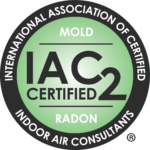A ground-fault circuit interrupter (GFCI) is designed to interrupt the flow of electricity in the event of a mismatch between the incoming and outgoing current. With the GFCI outlet, the risk of shock and fatal burns is considerably reduced due to its ability to prevent the electrical wire from overheating and possible fire. Although it can be used to identify ground faults, it cannot be used as a fuse substitute because it does not protect against short circuits and overloading.
What is a GFCI Outlet?
The GFCI is built into the electrical outlet and constantly monitors the flow of electricity in a circuit to detect irregularities in real-time. The outlet features three holes: two for neutral and hot wires and one for a ground wire in the center. All electricity is immediately switched off when it senses a change of any kind in a circuit. Since water can get into an outlet when you’re drying your hair, GFCI outlets will automatically shut off power to prevent electrical shock in bathrooms and other areas where water is present, such as kitchens and garages.
Location of GFCI Outlet
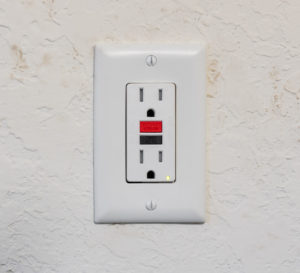
Electrical outlets near a moist environment require GFCI outlets. This is a brilliant idea in the kitchen, bathrooms, laundry rooms, pool house, or anywhere there is a possibility of water splashing around the house. The installation of GFCI outlets in every room of your home is not only required by law, but it’s also a wise precaution to take. GFCI protection is required by the National Electric Code (NEC) in all residences. In recent years, all single-phase outlets have been mandated to have GFCI outlets installed, which was previously exclusively the case for those located near water. GFCI outlets should also be installed on temporary electrical systems during building, remodeling, or maintenance of temporarily powered structures.
Importance of GFCI protection
An electrical ground fault has many dangers and implications that must be considered. In the event of a ground fault, you could be electrocuted or even shocked. It’s more likely to happen in moist areas and near water. Bathrooms, kitchens, and outdoor locations with a lot of moisture are included in this category. Why? This is because water acts as a conduit for electrical current. It’s also possible to get an electric shock if you come into contact with a live electrical conductor because human tissue has poor impedance to electrical currents.
An electrical ground fault can be prevented using ground-fault circuit interrupters (GFCI). Allowing equal current flow between the equipment and the GFCI prevents harm by interrupting current flow if this flow differs from usual.

In conclusion, A GFCI should be checked for proper operation as part of routine maintenance. GFCIs are delicate devices that are susceptible to wear and tear or injury. If the GFCI isn’t working correctly, it could allow electricity to flow, which is dangerous. For plug-in devices, tests should be carried out by the manufacturer’s recommendations.
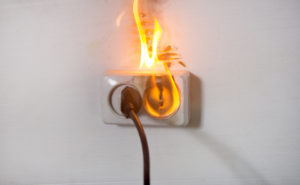
Fire Prevention – 10 Tips to Keep Your Home Safe
A fire can start in the blink of an eye, but the damage it leaves behind can last a lifetime. That’s why it’s so important to be proactive about fire prevention. Taking some simple steps to reduce the risk of a fire starting in your home is well worth the effort. Here are 10 tips to help you get started.
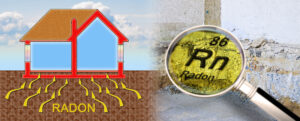
Radon In Your Home
Radon is a naturally occurring, radioactive gas that you can’t see, taste, or smell. Indoor radon is the second leading cause of lung cancer after smoking and contributes to an estimated 7,000 to 30,000 lung cancer deaths each year.
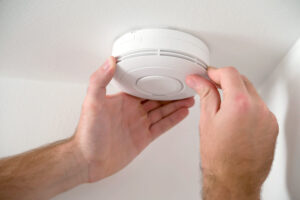
Smoke Alarms & What You Should Know
As a reputable home inspection service, we always advise installing a functional smoke alarm in your house. Also, regularly inspecting them can ensure that they are functioning correctly

Roof System: 4 Tips to Protect it in Winter
Winter is approaching, and if you want to keep your roof and your house safe from harm and damage during these cold and snowy months,
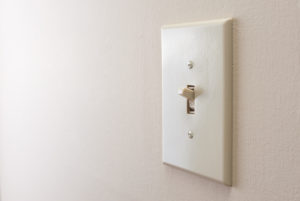
Bathroom And Kitchen Vents: Why You Should Turn Them On
Generally, the bathroom and kitchen are the most commonly used part of a house. They are known to have the latest technical equipment and are

Dryer Vents: 10 Cleaning and Safety Tips for You!
Generally, homeowners do not notice the dryers vents when it comes to our laundry appliances. Even though they remove all of our clothing’s unwanted fuzz
Radon is a naturally occurring radioactive gas that can cause lung cancer.
You can’t see or smell radon. Testing is the only way to know your level of exposure. Radon can have a big impact on your Indoor Air Quality. Which Radon Zone do you live in? Find Radon Zone and Supplemental Radon Information near you.
Mold is a fungus that grows on damp surfaces, such as the walls and floors of your home. Left unchecked, it can grow in colonies and produce allergens and irritants. It’s important to test for mold before buying or selling a home so you can remediate the issue prior to closing escrow.
There are many different types of mold that can occur in a home and lead not only to structural damage, but some health concerns as well.
Mold is difficult to find in many homes as it grows exclusively in dark and moist areas that are usually hidden somewhere in the structural areas of the home such as attics and basements.
Get more information about mold in your home from this FREE guide on mold in your home.
Find the typical life expectancy for most components that are normally found in homes
Typical life expectancies for most components found in homes are listed in this page. These life expectancies have been determined through research and testing based on regular recommended maintenance and conditions of normal wear and tear, and not extreme weather (or other) conditions, neglect, over-use, or abuse
Whether you’re a first-time homebuyer or a veteran homeowner downsizing or trading up, these valuable tips can help streamline your real estate transaction by making it go quicker and smoother, with the help of your InterNACHI-Certified Professional Inspector®





